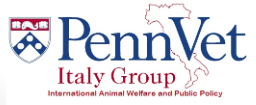On our first full day at IRSEA, Dr. Patrick Pageat, a veterinarian and the founder of the company, spent the morning, giving us an overview of pheromones, semiochemicals and the connection between the nose and the brain.
He dove into the idea the chemical communication is common to every living creature and depends on the habitat in which the animal lives (water making it easier to communicate versus air, in which the chemical must be more volatile). There are both innate signals, which are semiochemicals, and experience related scents which require learning to activate the memory centers of the brain.
Innate signals (or semiochemicals) have different inter-specific actions. They can:
- have an advantage to the animal which emits the pheromone
- This is key in studying insect repellent! It can be used to stop mosquitoes from biting a host and prevent the spread of disease.
- have an advantage to the receiver
- have an advantage to both the emitter and receiver
- a classic example is a tree under the duress from a red mite. The tree will emit a scent which attracts another species of mite which comes and predates on the harmful red mite.
- be emitted by dead material and be either detrimental or beneficial
- such as blood
In order to comprehend the importance of chemical communication in the living world, one must understand the vomeronasal organ (VNO). The VNO lies withing the nasal cavity and is connected to the trigeminal and VNO nerves. These nerves connect to the accessory olfactory bulb. Illustrating the direct connection between smell, processing, understanding, and memory.
The VNO has hairs within it and these vary between species. The variation in the hairs also causes variation in how each species traps scents and gets them into their VNO. The VNO is also encased in cartilage, meaning that it is in a confined space. If the organ becomes engorged or inflamed, it can make it hard for the animal to understand and process its environment. Dr. Pageat believes this could be a cause of many behavioral issues in our companion animals.
All animals have scent glands that can be recognized between species and between differing species. This olfactory continuity is seen most strongly between a mother and a newborn. IRSEA uses this strong appeasing pheromone to treat stress in horses. By understanding and harnessing pheromones the company has been able to make great strides in animal welfare.
In one short morning, the great scope of pheromones was illustrated to us. Pheromones are important for the synchronization of behaviors within groups and they modulate emotions and influence coping mechanisms. Most importantly,pheromones have predictable effects and therefore can be used to help animals cope with our complex and versatile behavior.
The second half of our day was spent touring the the Mira Europe facility. Mira is the only school of guide dogs for visually impaired children in Europe.
The center is made up of three buildings. The first of which is the house in which the guide dogs are housed and trained (when not with their foster families). It is a beautifully kept facility with indoor/outdoor runs and a yard in which the dogs can play. We were lucky enough to be able to meet some of the dogs!
The next building is not a building at all but rather a space. It looks like a small park and has been appropriately named The Course of the Senses. This is an area where children and their dogs get used to both each other and how they will navigate the outside world side by side. The course has different fragrant flowers and fountains with different sounds to allow both dog and child to know where they are within the course. There are street signs, cross walks, and even a subway turnstile which is a difficult obstacle most people take for granted. While the children stay at the school and become familiar to life with a guide dog, the course of the senses is there first foray into the outside world. It is their classroom which teaches them the obstacles they will face as the grow and become independent.
The last building houses the reception and the dorm rooms for the children who are required to stay at the facility and learn how to live and navigate with their guide dog. The dorm room is equipped with a kitchen, private bedrooms and shared bathroom. Each student is given a clicker which gives audio ques, helping the children navigate where to find the bedroom, bathroom, kitchen, and other important landmarks. For most children, this is their first time away from home and the staff do all they can to make the children feel at home and comfortable in their new surroundings.
To learn more about this amazing organization, click HERE









